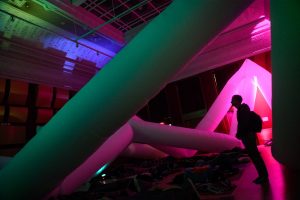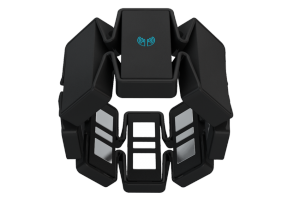gates-face
function setup() {
createCanvas(500,500);
background(255);
}
function draw() {
fill(242,208,239);
noStroke();
ellipse (250,250,500,700);
stroke (0);
strokeWeight (1);
fill(255);
ellipse(150,250,250,250);
ellipse(350,250,250,250);
fill(19,175,26);
noStroke();
ellipse(150,200,100,100);
ellipse(350,200,100,100);
stroke(190,190,6)
strokeWeight (3);
noFill();
beginShape();
curveVertex (130,180);
curveVertex (135,165);
curveVertex (150,170);
curveVertex (165,165);
curveVertex (170,180);
curveVertex (185,185);
curveVertex (180,200);
curveVertex (185,215);
curveVertex (170,220);
curveVertex (165,235);
curveVertex (150,230);
curveVertex (135,235);
curveVertex (130,220);
curveVertex (115,215);
curveVertex (120,200);
curveVertex (115,185);
endShape(CLOSE);
noFill();
curve(130,180,130,180,135,165,135,165);
noFill();
beginShape();
curveVertex (330,180);
curveVertex (335,165);
curveVertex (350,170);
curveVertex (365,165);
curveVertex (370,180);
curveVertex (385,185);
curveVertex (380,200);
curveVertex (385,215);
curveVertex (370,220);
curveVertex (365,235);
curveVertex (350,230);
curveVertex (335,235);
curveVertex (330,220);
curveVertex (315,215);
curveVertex (320,200);
curveVertex (315,185);
endShape(CLOSE);
noFill();
curve(330,180,330,180,335,165,335,165);
fill(0)
noStroke();
ellipse(150,200,50,50);
ellipse(350,200,50,50);
fill(218,0,165);
triangle (250,375,225,425,275,425);
stroke(40,17,0);
strokeWeight(3);
line(50,420,50,445);
line(60,425,60,450);
line(70,430,70,455);
line(80,435,80,460);
line(90,438,90,463);
line(100,441,100,466);
line(110,444,110,469);
line(120,447,120,472);
line(130,450,130,475);
line(140,453,140,478);
line(150,454,150,480);
line(160,456,160,482);
line(170,458,170,484);
line(180,459,180,485);
line(190,460,190,486);
line(200,461,200,487);
line(210,462,210,488);
line(220,463,220,489);
line(230,463,230,489);
line(240,463,240,489);
line(250,463,250,489);
line(260,463,260,489);
line(270,463,270,489);
line(280,463,280,489);
line(290,462,290,488);
line(300,461,300,487);
line(310,460,310,486);
line(320,459,320,485);
line(330,458,330,484);
line(340,456,340,482);
line(350,454,350,480);
line(360,453,360,478);
line(370,450,370,475);
line(380,447,380,472);
line(390,444,390,469);
line(400,441,400,466);
line(410,438,410,463);
line(420,435,420,460);
line(430,430,430,455);
line(440,425,440,450);
line(450,420,450,445);
noFill();
stroke(218,0,165);
strokeWeight(5);
arc(250,345,600,300,0,PI);
fill(0);
noStroke();
arc(250,0,350,200,0,PI);
}
People always tell me I have big, expressive eyes so I knew they would be the focus of this self-portrait. Since the Mondrian assignment got me very familiar with rectangles, I wanted to challenge myself to explore other shapes. Using the curveVertex() function to make the gold rings inside the eyes involved the most trial and error, as did positioning the many lines that make up the mustache.

![[OLD FALL 2018] 15-104 • Introduction to Computing for Creative Practice](../../../../wp-content/uploads/2020/08/stop-banner.png)


